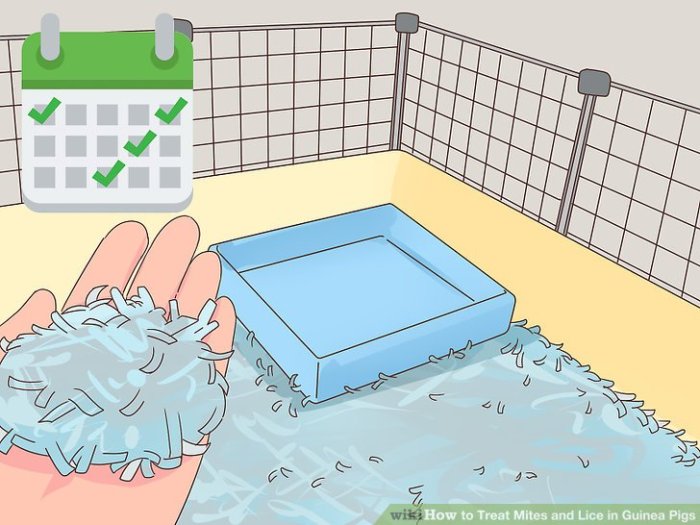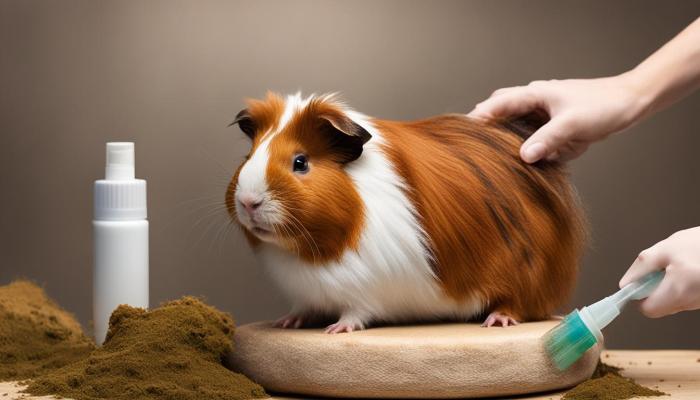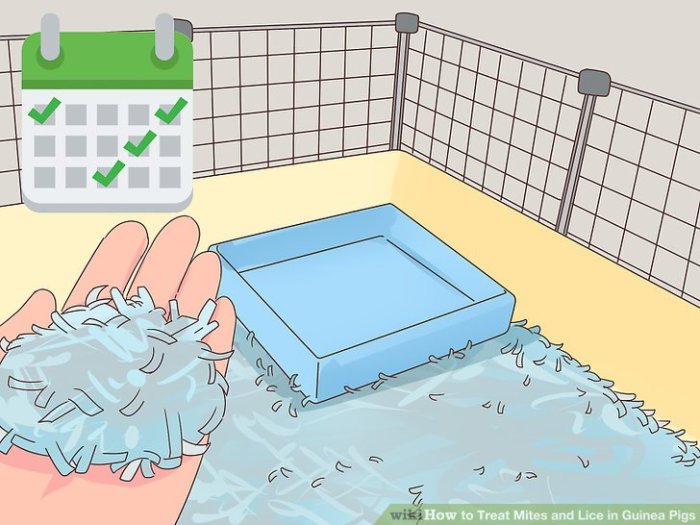Tell if a Cat Has Rabies: A comprehensive guide to recognizing the signs, symptoms, and important considerations for diagnosing and preventing rabies in cats. This article delves into the complexities of rabies in felines, from subtle behavioral changes to severe physical symptoms. We’ll explore the importance of vaccination, proper handling, and reporting suspected cases, providing you with a practical understanding of how to protect both your cat and your community.
Recognizing rabies in cats can be challenging, as the symptoms can mimic other feline illnesses. Understanding the progression of the disease, from early behavioral changes to advanced physical symptoms, is crucial for early intervention. This guide provides a detailed comparison of normal and abnormal behaviors, along with physical symptoms, enabling you to identify potential warning signs.
Recognizing Signs of Rabies in Cats
Rabies is a fatal viral disease that can affect a wide range of mammals, including cats. Early detection is crucial for treatment and to prevent the spread of the disease. Unfortunately, distinguishing rabies symptoms in cats from other illnesses can be challenging. Recognizing the progression of these symptoms, however, can be a key step in providing timely veterinary care.
Behavioral Changes in Rabies-Infected Cats
Rabies infection significantly alters a cat’s behavior, often progressing from subtle changes to more pronounced and dangerous symptoms. Understanding these changes, and how they differ from normal feline behavior, is essential for early diagnosis.
Early Stages of Rabies
Initially, the signs of rabies in cats might be subtle and easily overlooked. Cats may exhibit mild behavioral changes, which can be mistaken for other health issues. These early signs often include subtle changes in appetite, decreased activity levels, and a slight change in temperament. For instance, a normally playful cat might become less active or withdrawn. These early changes are often overlooked, and a veterinarian should be consulted for any unexplained changes in a cat’s behavior.
Mid-Stage Behavioral Changes
As the disease progresses, the behavioral changes become more pronounced. The cat might exhibit increased aggression or fearfulness, potentially directed towards people or other animals. There could be changes in vocalization, such as excessive meowing or growling. Changes in eating habits may worsen, with the cat refusing food or showing erratic eating patterns. Disorientation and confusion are also possible.
It’s crucial to remember that these changes can vary significantly from cat to cat.
Late-Stage Rabies Symptoms
In the later stages, the symptoms become more severe. The cat may exhibit violent or erratic behavior, including seizures, paralysis, and difficulty swallowing. The cat may also experience significant disorientation, becoming more isolated, and possibly becoming more aggressive. The progression of symptoms is often rapid and can lead to death within days of the onset of severe symptoms.
Normal vs. Abnormal Cat Behaviors (Possible Rabies Signs)
| Normal Behavior | Abnormal Behavior (Possible Rabies Sign) |
|---|---|
| Purring | Excessive aggression or fearfulness |
| Grooming | Difficulty swallowing or drooling |
| Playing | Inappropriate aggression toward humans or other animals |
| Eating regularly | Refusal to eat, erratic eating patterns |
| Sleeping appropriately | Excessive restlessness or lethargy |
| Normal vocalizations (meows, purrs) | Excessive growling, howling, or other unusual vocalizations |
It’s vital to note that this table provides a general overview. Only a veterinarian can definitively diagnose rabies. If you suspect your cat might have rabies, immediate veterinary attention is crucial. Never attempt to handle a potentially rabid cat yourself.
Physical Symptoms of Rabies in Cats: Tell If A Cat Has Rabies
Rabies, a devastating viral disease, affects the central nervous system and ultimately leads to death if left untreated. Understanding the physical symptoms in cats is crucial for early detection and prompt veterinary intervention. While the progression can vary, certain signs typically emerge as the disease progresses. Early recognition can be critical in potentially saving a cat’s life.The progression of rabies symptoms can be unpredictable, but generally follows a pattern of initial subtle changes that escalate in severity.
Symptoms often begin insidiously, making early detection challenging. It’s important to be vigilant and recognize any unusual behavior changes in a cat, even if seemingly minor. Prompt veterinary attention is essential if any suspicion arises.
Identifying the Spectrum of Physical Symptoms
Cats exhibiting rabies symptoms may display a range of neurological changes. These signs can vary depending on the stage of the infection and the individual cat’s response. The symptoms can overlap with other feline illnesses, making diagnosis difficult without proper testing.
Progression and Severity of Symptoms
Rabies in cats typically progresses from subtle neurological changes to more pronounced symptoms. Initial signs might include subtle changes in behavior, such as increased aggression, nervousness, or restlessness. These initial symptoms often go unnoticed or are misattributed to other causes. As the disease advances, the symptoms intensify, leading to more severe neurological problems. The progression can be rapid, and the severity can differ between cats.
For example, some cats may show signs of paralysis more rapidly than others. This variable progression underscores the importance of vigilance in recognizing any behavioral changes.
Comparing Rabies Symptoms with Other Feline Illnesses
Distinguishing rabies from other feline illnesses can be challenging, as some symptoms overlap. For instance, fever, lethargy, and loss of appetite can occur in various illnesses. However, the progression and combination of specific neurological signs, such as seizures, paralysis, or abnormal vocalizations, are more indicative of rabies. Thorough veterinary examination, including a detailed history and physical exam, is crucial for a proper diagnosis.
Table of Physical Symptoms of Rabies in Cats
| Symptom | Description | Severity |
|---|---|---|
| Behavioral Changes | Increased aggression, nervousness, restlessness, fearfulness, or disorientation | Mild to Moderate |
| Salivation | Excessive drooling or foaming at the mouth | Moderate to Severe |
| Seizures | Sudden, uncontrolled muscle contractions | Variable |
| Paralysis | Loss of muscle function, often progressing from one area to another | Severe |
| Difficulty Swallowing | Inability to eat or drink properly | Moderate to Severe |
| Loss of Coordination | Staggering, stumbling, or uncoordinated movements | Moderate to Severe |
| Abnormal Vocalizations | Loud meows, yowls, or other unusual vocalizations | Mild to Moderate |
| Increased Sensitivity to Stimuli | Overreaction to touch, light, or sound | Variable |
Important Considerations for Diagnosis
Rabies, a devastating viral disease, can be notoriously difficult to diagnose definitively in its early stages. While observing physical symptoms can provide valuable clues, a definitive diagnosis requires careful consideration of various factors and specific diagnostic procedures. A veterinarian’s expertise is crucial in navigating this complex process.Accurate diagnosis is paramount to ensure appropriate treatment and prevent the spread of the disease.
Misdiagnosis can have serious consequences, both for the infected animal and for public health. Understanding the limitations of symptom-based diagnoses and the specific diagnostic methods employed can help in making informed decisions about the possibility of rabies infection.
Figuring out if a cat has rabies can be tricky, but thankfully, there are clear signs to look for. Learning how to communicate effectively with your significant other is just as important. For example, remember how to say “goodnight” to your girlfriend in a way that makes her feel loved and appreciated? Check out this helpful guide on Say Goodnight to Your Girlfriend over Text for some inspiration.
Ultimately, recognizing those rabies symptoms is crucial for both your cat’s well-being and your own safety.
Importance of Veterinary Consultation
Veterinary expertise is essential in evaluating suspected rabies cases. A veterinarian possesses the knowledge and resources to conduct a thorough examination, interpret clinical signs, and order appropriate diagnostic tests. Their guidance is vital in distinguishing rabies from other neurological conditions that might present with similar symptoms. A vet can also provide critical information about the animal’s exposure history, which can significantly influence diagnostic decisions.
Diagnostic Methods
Several methods are used to confirm a rabies diagnosis. These include laboratory tests that analyze brain tissue samples, and specific neurological evaluations to confirm the presence of rabies. The primary diagnostic method for rabies involves examining brain tissue samples under a microscope to detect the presence of characteristic rabies virus inclusions. This requires a post-mortem examination.Other diagnostic methods, such as fluorescent antibody tests or immunohistochemistry, can be employed to detect rabies virus antigens in the brain or other tissues.
These techniques allow for a faster turnaround time compared to the traditional microscopic examination. The specific method used will depend on the availability of resources and the specific circumstances of the case.
Limitations of Symptom-Based Diagnosis
It’s crucial to understand that early symptoms of rabies can mimic other neurological conditions. Symptoms like aggression, tremors, or paralysis can be present in various diseases, making a conclusive diagnosis based solely on observed symptoms unreliable. This highlights the importance of additional diagnostic steps, particularly when dealing with animals that display less common or atypical signs.
Factors to Consider When Assessing Rabies Infection
- Animal’s Exposure History: Recent exposure to wild animals or unvaccinated animals in high-risk areas significantly increases the likelihood of rabies infection. A history of animal bites or scratches, especially from unfamiliar animals, is a key factor to consider. For instance, a stray cat found wandering in a rural area with a history of bat encounters, should raise suspicion of potential rabies infection.
- Clinical Presentation: While symptoms like aggression, paralysis, and difficulty swallowing are indicative of rabies, their presence doesn’t definitively confirm the disease. Other neurological conditions can exhibit similar symptoms. A detailed observation of the animal’s behavior and physical condition, over time, is crucial to identify patterns and deviations from normal behavior that might point towards rabies.
- Geographic Location: The prevalence of rabies varies geographically. Areas with a known history of rabies outbreaks or high wildlife populations pose a higher risk. This is a crucial factor in determining the likelihood of rabies infection.
- Severity and Progression of Symptoms: The speed and intensity of the clinical signs can offer some insights. Rapid progression, accompanied by severe neurological symptoms, can be a warning sign. A careful record of the progression of the animal’s symptoms is a crucial aspect of the assessment.
- Laboratory Test Results: Results from the specific diagnostic tests, such as microscopic analysis, fluorescent antibody tests, and immunohistochemistry, provide definitive proof of rabies infection.
Preventing Rabies in Cats
Rabies, a devastating viral disease, poses a significant threat to cats and other animals. Preventing rabies in cats is crucial not only for their health but also for public safety, as it can be transmitted to humans. Vaccination is the most effective method for preventing rabies in cats and plays a critical role in controlling the spread of this disease.Vaccination is a vital preventative measure against rabies.
Figuring out if a cat has rabies can be tricky, and thankfully, there are resources to help you determine the signs. While you’re researching, you might also be looking for ways to make some extra cash. If you’ve got some extra Ticketmaster tickets gathering dust, consider selling them on Stubhub; Sell Ticketmaster Tickets on Stubhub to find out how.
Knowing the signs of rabies in your furry friend is paramount for their safety and your peace of mind. Staying informed is key, and resources online can help.
It stimulates the cat’s immune system to produce antibodies that can fight off the rabies virus if exposed. This proactive approach significantly reduces the risk of infection and the devastating consequences associated with rabies.
Figuring out if a cat has rabies can be tricky, requiring careful observation. Thankfully, understanding the legal aspects of registering a business in New York can be just as straightforward, especially if you’re looking at the process of Register a Business in New York. Ultimately, knowing the signs of rabies in animals is crucial for pet owners and public health, and keeping your business practices in order is equally important.
Importance of Rabies Vaccination
Vaccination is paramount for protecting cats from rabies. The rabies virus, once contracted, is almost invariably fatal. Vaccination offers a safe and effective way to build immunity and significantly reduce the risk of contracting this potentially lethal disease. The vaccine triggers the immune system to produce antibodies that neutralize the virus if exposure occurs. This protection is crucial for safeguarding both the cat’s health and the community’s well-being.
Rabies Vaccination Schedule for Cats
A consistent vaccination schedule is crucial for providing optimal protection against rabies in cats. The schedule is typically tailored to ensure the cat’s immune system develops adequate protection. It is recommended that kittens receive their first rabies vaccination at 12-16 weeks of age. Subsequent boosters are necessary to maintain immunity, and the specific schedule depends on the vaccine type and local regulations.
Procedures for Proper Rabies Vaccination, Tell if a Cat Has Rabies
Veterinarians administer rabies vaccinations safely and effectively. The procedure involves injecting a specific dose of the rabies vaccine under the skin (subcutaneously). The injection site should be monitored for any signs of adverse reactions. Veterinarians are trained to handle and administer vaccinations in a sterile manner to prevent infections and ensure the safety of the animal. It is crucial to consult a veterinarian for guidance on the appropriate vaccination schedule and procedures for your cat.
Rabies Vaccines and Dosage
Different rabies vaccines are available, each with specific dosage and administration methods. Veterinarians will recommend the most appropriate vaccine based on the cat’s age, health, and other factors. Adherence to the prescribed schedule and dosage is critical for optimal protection.
| Vaccine Type | Dosage | Administration Method |
|---|---|---|
| RabAviral | 1 ml | Subcutaneous |
| Rabvac | 1 ml | Subcutaneous |
| Rabi-5 | 1 ml | Subcutaneous |
Note: Dosages and administration methods may vary depending on the specific vaccine and the veterinarian’s recommendations. Always consult your veterinarian for the most accurate and up-to-date information regarding rabies vaccination for your cat.
What to Do if You Suspect a Cat Has Rabies
Rabies is a fatal viral disease that can be transmitted to humans through the bite or scratch of an infected animal. Prompt and appropriate action is crucial if you suspect a cat has rabies to protect both the animal and yourself. Knowing what to do can save lives.
Immediate Actions Upon Suspicion
Suspecting a cat might have rabies demands swift, decisive action. Immediate steps will help contain the situation and ensure the safety of everyone involved. These steps should be taken as soon as possible.
- Isolate the animal immediately. This is paramount to prevent potential transmission to other animals or humans. Confine the cat to a secure area, such as a separate room or a cage, away from other pets and children. Avoid contact with the cat as much as possible.
- Avoid handling the cat. Do not attempt to restrain or treat the cat yourself. Rabies can be transmitted through saliva or other bodily fluids.
- Seek immediate veterinary care. This is critical. Veterinarians have the expertise to assess the animal and take appropriate steps, including proper containment and handling.
Importance of Isolation
Proper isolation is a vital component of rabies prevention. A rabid cat can infect other animals, including pets and wildlife, within a short time. Containment minimizes the risk of spreading the disease.
Seeking Immediate Veterinary Care
Prompt veterinary care is essential for several reasons. Veterinarians can perform a thorough examination and determine if the cat exhibits rabies symptoms. They are equipped to handle potentially rabid animals safely and can provide the necessary treatment. Moreover, they can confirm or rule out the presence of rabies.
Safe Handling of a Potentially Rabid Cat
Handling a potentially rabid cat requires extreme caution. It is crucial to prioritize safety and prevent any contact with saliva or bodily fluids. Never attempt to handle the animal yourself. Professional veterinary staff is trained to handle such situations safely.
Reporting Suspected Rabies Cases
Reporting suspected rabies cases is a crucial step in public health. Contacting local animal control or public health authorities is important for disease surveillance and containment. Prompt reporting helps prevent further spread and facilitates the implementation of control measures. These authorities are trained to deal with such situations and know how to report and manage suspected cases effectively.
Follow their guidance and instructions.
Understanding Rabies Transmission

Rabies, a devastating viral disease, poses a significant threat to both animals and humans. Understanding how the virus spreads is crucial for prevention and control. This knowledge empowers individuals to take necessary precautions and protect themselves and their loved ones.Rabies is a zoonotic disease, meaning it can be transmitted from animals to humans. The virus primarily affects the central nervous system, causing severe neurological symptoms and ultimately leading to death if left untreated.
The mode of transmission, while often associated with bites, can also occur through other forms of contact.
Modes of Rabies Transmission Between Animals
Animal-to-animal transmission of rabies typically involves direct contact, most commonly through bites. Saliva from an infected animal carrying the virus can transmit the disease. Other less common routes include scratches or contact with contaminated tissues. This highlights the importance of preventing direct contact with potentially infected animals.
How Rabies is Transmitted from Animals to Humans
The transmission of rabies from animals to humans typically involves direct contact with infected saliva, most commonly through a bite. However, other forms of exposure, such as scratches or contact with contaminated tissues, are also possible. The virus enters the body through the break in the skin, and from there, it travels to the central nervous system. The risk of transmission is highly dependent on the amount of virus present in the saliva.
The Lifecycle of the Rabies Virus
The rabies virus has a complex lifecycle. It initially replicates in the muscles at the site of entry, then travels along the nerves to the central nervous system. This process can take several weeks, even months. Once in the central nervous system, the virus replicates further, causing inflammation and ultimately leading to the devastating symptoms characteristic of rabies.
The virus then moves back down the nerves to salivary glands, where it can be secreted in saliva.
Table of Rabies Transmission Methods
| Transmission Method | Description |
|---|---|
| Bite | Direct contact via a bite from an infected animal, where infected saliva enters the bloodstream through a break in the skin. |
| Scratch | Contact with contaminated saliva through a scratch, allowing the virus to enter the body through an open wound. |
| Contact with Contaminated Tissues | Exposure to infected tissues, such as mucous membranes or open sores, can transmit the virus if contaminated saliva or fluids are involved. |
Rabies and Public Health

Rabies, a devastating viral disease, poses a significant threat to both animal and human populations. Understanding the public health implications of rabies in animals is crucial for implementing effective control measures and safeguarding communities. The transmission dynamics and potential for severe consequences demand proactive strategies to mitigate the risks.A well-functioning rabies control program is essential for public health.
These programs encompass a range of interventions aimed at preventing the spread of rabies within animal populations and protecting human populations from exposure. The success of such programs hinges on coordinated efforts and a deep understanding of the disease’s biology and transmission routes.
Public Health Implications of Rabies in Animals
Rabies, when present in animal populations, poses a substantial threat to public health. The virus can spread from infected animals to humans through bites, scratches, or exposure to saliva. A high prevalence of rabies in wildlife can lead to increased risk of human exposure, especially in areas where human-wildlife interaction is common. This risk is particularly high for children, individuals working with animals, and communities living near forested areas or wildlife habitats.
Importance of Rabies Control Programs
Rabies control programs are vital for protecting public health. These programs encompass vaccination campaigns for susceptible animal populations, surveillance systems to track rabies cases, and education initiatives to promote awareness among the public. Effective programs are designed to reduce the number of infected animals and break the cycle of transmission, thereby minimizing the risk of human exposure.
Measures Taken to Prevent the Spread of Rabies
Numerous measures are implemented to prevent rabies transmission. These include:
- Vaccination Programs: Targeted vaccination campaigns for domestic animals, such as dogs and cats, are crucial. These campaigns aim to create a “herd immunity” effect, reducing the prevalence of the virus within the population and limiting its spread. For example, many communities mandate rabies vaccinations for pets to ensure the safety of both the animal and the public.
- Wildlife Surveillance: Monitoring wildlife populations for rabies is essential. Regular testing of animals can help identify and contain outbreaks, enabling prompt interventions and preventing further spread. Researchers regularly analyze wildlife populations for the presence of rabies, providing critical data for public health initiatives.
- Education and Awareness: Educating the public about rabies transmission, prevention measures, and the importance of reporting suspected cases is vital. Public awareness campaigns can emphasize safe handling practices for animals, and the need to report suspected cases to local authorities. Clear communication with the public helps to empower individuals to make informed decisions about animal encounters and to prevent unnecessary exposures.
Organizations Involved in Rabies Prevention and Control
Various organizations play a critical role in rabies prevention and control efforts globally.
- World Organization for Animal Health (OIE): The OIE is a global organization dedicated to improving animal health worldwide. They develop and promote international standards for rabies prevention and control, supporting global collaboration in tackling the disease.
- Centers for Disease Control and Prevention (CDC): The CDC in the United States is a key resource for rabies information and guidance. They provide resources, guidance, and expertise for rabies prevention and control within the United States.
- Local Health Departments: Local health departments play a critical role in implementing and managing rabies control programs within their communities. They often conduct vaccination campaigns, monitor cases, and provide resources to the public.
Differentiating Rabies from Other Diseases
Rabies, a devastating viral disease, can be challenging to diagnose, especially in its early stages. Its symptoms can mimic those of other common feline illnesses, making accurate identification crucial for timely treatment and preventing the spread of the disease. Differentiating rabies from other feline conditions relies on a thorough veterinary examination, specific diagnostic tests, and careful consideration of the animal’s history.Accurate diagnosis is vital, as misdiagnosis can delay appropriate treatment and potentially expose others to the rabies virus.
A thorough understanding of both rabies symptoms and those of similar conditions allows for a more accurate and timely assessment. A proper diagnosis is the cornerstone of effective rabies management and prevention.
Comparing Rabies Symptoms with Other Feline Illnesses
Many feline illnesses share overlapping symptoms with rabies in the initial stages. This overlap can make early diagnosis challenging. Recognizing subtle differences and the progression of symptoms can help differentiate rabies from other conditions. For instance, fever, lethargy, and loss of appetite are common to various feline illnesses, including upper respiratory infections and viral infections.
Diagnostic Tests for Differentiating Rabies
Several diagnostic tests aid in distinguishing rabies from other diseases. These tests are crucial for confirming rabies, as they help determine the exact cause of the animal’s symptoms. A definitive diagnosis typically involves the examination of the brain tissue for the presence of rabies virus particles.
- Neurological Examinations: A veterinarian will conduct a thorough neurological examination, assessing reflexes, coordination, and muscle tone. These observations can provide clues about the nature of the neurological condition. For example, if the cat displays abnormal gait, the veterinarian will take note of this, and combine it with other observations to form a hypothesis about the cause of the condition.
- Clinical History: A detailed history, including exposure to other animals or possible environmental factors, is essential. This can help identify potential contributing factors to the cat’s condition. The veterinarian may ask about the cat’s recent activities, diet, and any unusual behaviors. For instance, if the cat has been exhibiting aggressive behavior recently, the veterinarian may consider this a possible contributing factor.
- Laboratory Tests: Laboratory tests, such as blood tests and cerebrospinal fluid analysis, can help rule out other conditions. These tests can provide valuable information about the animal’s overall health and identify any abnormalities. For instance, a blood test can identify infections or metabolic imbalances that might mimic rabies symptoms.
Importance of a Complete Veterinary Examination
A comprehensive veterinary examination is paramount in distinguishing rabies from other diseases. This examination includes not only physical assessments but also a detailed history of the cat’s health and any potential exposures.
- Physical Examination: A thorough physical examination involves evaluating the cat’s overall physical condition, including temperature, heart rate, respiratory rate, and general appearance. This can reveal important clues about the cat’s health status. For example, a cat exhibiting jaundice may have a liver condition, and the vet will note this in the assessment.
- Patient History: A detailed history of the cat’s symptoms, including onset, duration, and severity, is crucial. Information about potential exposures to other animals or environmental factors is critical. For instance, a cat with a history of bites or scratches from other animals is more likely to have a condition that is linked to these exposures.
Table Contrasting Rabies with Common Cat Diseases
| Disease | Symptoms | Diagnostic Tests |
|---|---|---|
| Feline Leukemia Virus (FeLV) | Weakness, weight loss, fever, and decreased appetite. | Blood tests, antibody tests, and PCR testing. |
| Feline Immunodeficiency Virus (FIV) | Lethargy, recurrent infections, and neurological issues. | Blood tests, antibody tests, and PCR testing. |
| Rabies | Progressive neurological signs (such as paralysis, aggression, seizures, and abnormal behavior). | Neurological examination, laboratory tests, and tissue analysis. |
| Feline Upper Respiratory Infections (URI) | Sneezing, runny nose, and cough. | Physical examination, nasal swabs. |
End of Discussion
In conclusion, understanding rabies in cats requires a multi-faceted approach. From recognizing the subtle behavioral changes to addressing the severity of physical symptoms, this guide provides a comprehensive overview of the disease. Early detection is critical, emphasizing the importance of consulting a veterinarian for proper diagnosis and treatment. Vaccination plays a pivotal role in rabies prevention, and immediate action is crucial if you suspect a cat has rabies.
By being informed and proactive, you can contribute to the health and safety of your community.




